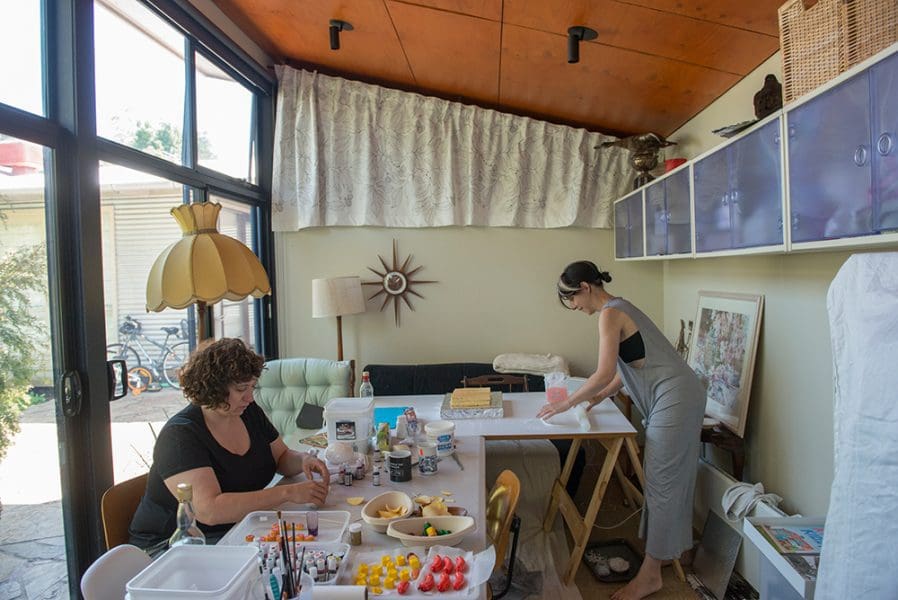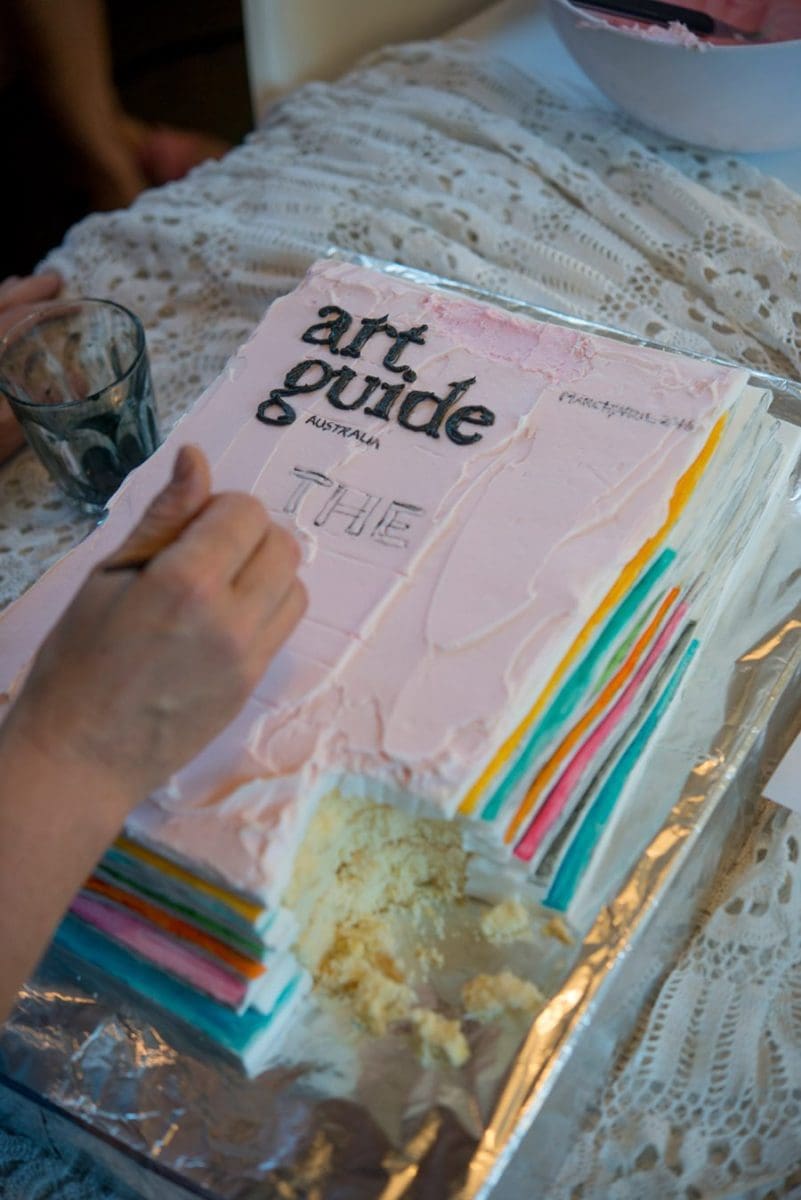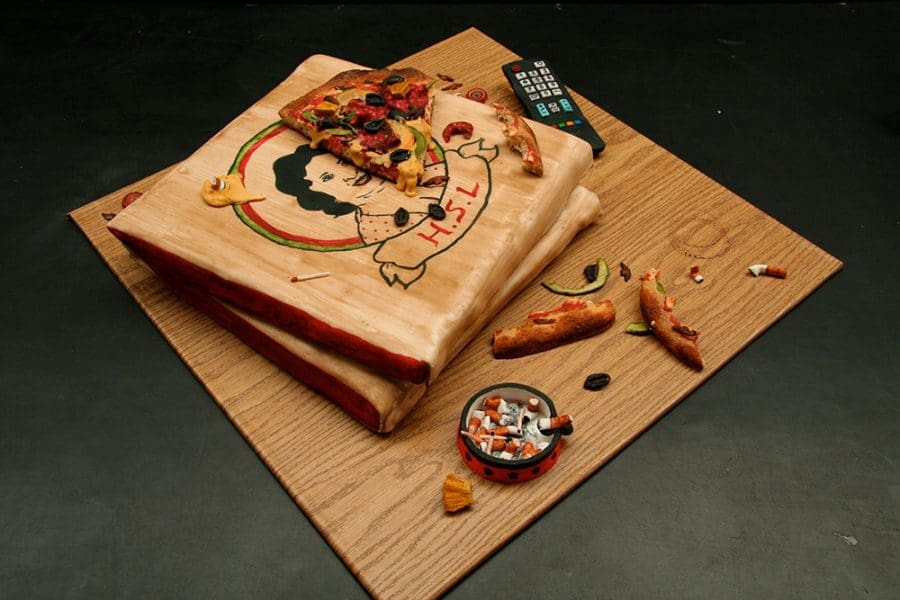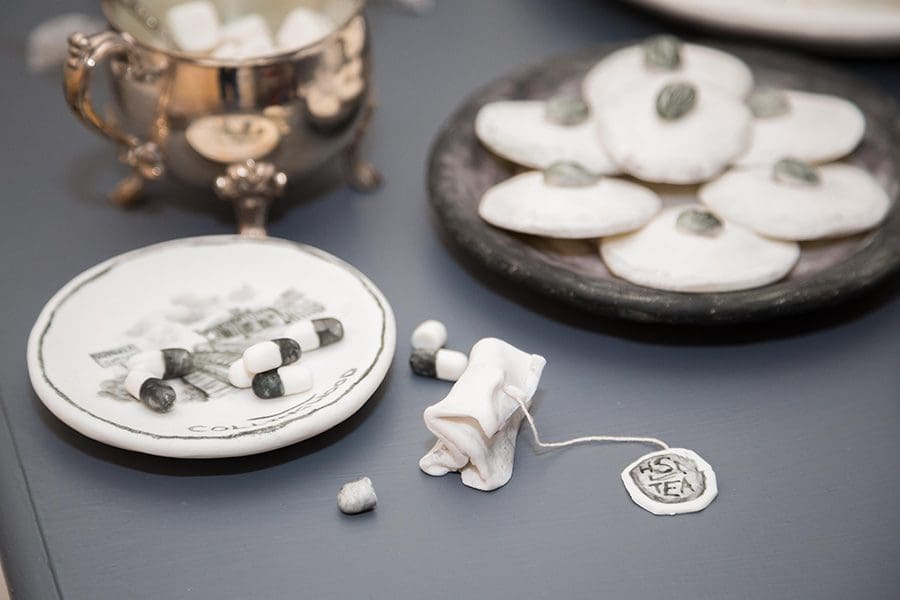
La Belle Èpoque in Bendigo
A new exhibition at Bendigo Art Gallery, drawn from the Musée Carnavalet in Paris, brings the Belle Èpoque era to life through impressionist paintings and antique ephemera. View, in pictures, a slice of Parisian history.






For Art Guide Australia’s 100th issue, we wanted to celebrate, so we got ourselves a cake. We commissioned art collective Hotham Street Ladies to make a tableaux for the cover of the magazine, complete with cake frankfurts, cake ketchup, cake potato chips and a stack of cake issues of Art Guide Australia.
One of the group’s members, Cassandra Chilton, put the piping bag down to talk with Toby Fehily about the art collective and the subversive messaging underneath their works’ seemingly sweet surfaces.
Toby Fehily: Tell us about the Hotham Street Ladies and how the group first came about.
Cassandra Chilton: The Hotham Street Ladies is a group of five women: Lyndal Walker, Caroline Price, Molly O’Shaughnessy, Sarah Parkes and myself.
We bring a diverse range of skills. Lyndal is a photographer, Sarah is a designer and product designer, Caroline has been involved in the fashion and accessories industry and as a jeweller, Molly is a social worker and I’m a landscape architect. So we cover quite a broad range of art, design and social practice, and what gives our work its many facets is the involvement with many different backgrounds, not necessarily all fine art backgrounds.
We all initially lived together, in various combinations, in a sharehouse in Hotham Street in Collingwood. It started with three of us deciding to create a recipe book for a Christmas present. We based it on a CWA contribution cook book and got a lot of our friends to write stories about recipes and give them to us – it was quite a social household and we had lots of photographs of various dinner parties we’d thrown. We collated this cookbook and made maybe about 20 copies and gave them to people.
Someone else’s housemate, who was a curator at the VCA gallery, saw it. She was putting together an exhibition called Group Show, about groups, and curated us into that show. I guess our art practice was born in that first installation in that show. It’s been an unexpected creative journey for us, something that’s been quite serendipitous. But the core of all of our work has been an interest in communities and craft and food.
Everyone has had a crappy cake that their mum’s made for them and I feel like our work manages to evoke that desire to make something beautiful but not necessarily possessing the skills to achieve that level of excellence.
We always endeavour to have just a slight sense of wonkiness. It’s a fine line, trying to find that slight wrong note that evokes that effort that can’t quite make it.

Fehily: How has the group and its practice evolved over the years?
Chilton: We work in different combinations; it isn’t always the five of us working on each project at a time. It’s evolved because our lives have changed: people are mothers now and people work in different industries. But I think what’s interesting is we’ve managed to keep our own relationship with each other going and that’s what sustains the practice.
We initially had two forms of practice. One was making hoax cakes for the Royal Melbourne Show. That was a series of self-initiated projects that we entered under false names in the amateur cake decorating section and then would create publicity around.
One was famously banned for being in poor taste. It was a Miss Haversham cake. We thought we were being really clever making a cake with lots of literary references but it was a little bit mouldy and the corner had been nibbled out and there was a mouse head poking out of it and mouse poo and everything. And so it wasn’t displayed that year, but Art Nation were making a documentary about us making that cake so the banning of it got incorporated.
At the same time we were also quite interested in street art and developed a practice we called “frosting”, which essentially involves going out and doing graffiti with icing sugar. It became this series of works that we eventually showed in a number of exhibitions about feminism. From there, we moved into doing more installation work and then I guess our shared house at Melbourne Now was when we really started to hone the use of our icing in much larger installations.
Fehily: How would you describe the main concern of the Hotham Street Ladies?
Chilton: I think the main concern is entertaining ourselves. A lot of our work is self-initiated and kind of community-based and it’s about our lives and our relationships with each other, the places that we’ve lived and the people we know. But obviously we are interested in what icing has come to mean: it’s a symbol of consumerism, but there are also notions of cake icing and making cakes being a feminine thing, so we’re very interested in subverting its meaning by making things that are funny with it. Certainly a sense of humour has been critical to a lot of the things that we do or just having a subtle poke at the eye. One of our interests is how we contemporise a traditional female craft into something that has more conceptual underpinnings about our ideas of feminism and art and food and community.
Fehily: What can you tell us about your contribution to Cornucopia, the upcoming group exhibition at Shepparton Art Museum?
Chilton: The show is about abundance but also about looking at different modes of food, food production and the meanings and metaphors of food. So we tried to immerse ourselves in the food of Shepparton. We went on a research trip and ate lots of food there and considered the way it was presented. We ended up construing a story around a single person for the work, which is called Dinner For One. It’s a tableaux of an elderly lady’s house and there is a meal on a stable table and it touches on loneliness and someone being on the edge of just not being able to look after themselves.
We tried to take something that’s sad and poignant and then use the medium of icing to subvert some of the elements of that. There’s a half-eaten meal of oven-baked chips and a smeared egg and a can of peaches. They’re all subtle references to Shepparton: it’s an aging population, as well as a centre for food production. There’s evidence of this old lady having lots of cats and having lots of cups of tea and not necessarily tidying up after herself.
Cornucopia
Shepparton Art Museum
27 February – 22 May